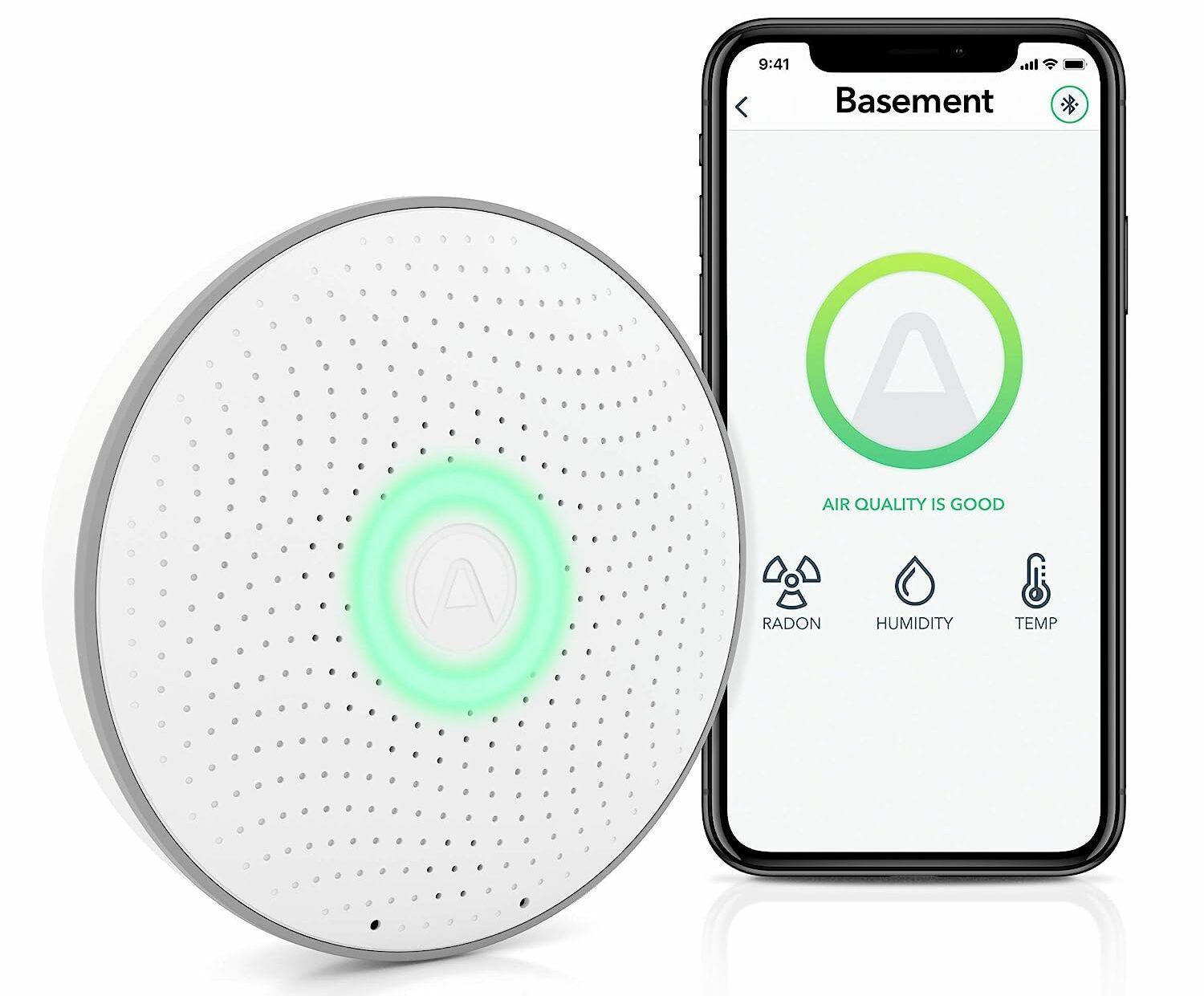

We may earn revenue from the products available on this page and participate in affiliate programs. Learn More ›
Q: I’ve been hearing a lot recently about how dangerous radon gas can be. I purchased a test kit for my home, but I don’t know what levels are considered high. Could you please explain safe radon levels to help me understand whether there is anything I’ll need to do after testing my home?
A: Testing for radon gas is a smart idea. Radon, a radioactive gas that is released from water, soil, and rocks, is invisible and has no odor. The gas can make its way into a home through cracks or holes in the foundation or siding. Because you cannot see or smell it, there is no way to know that radon is present in a home without performing a test. Testing is important because radon gas can pose a serious threat to the health and safety of those living in a home.
According to the United States Environmental Protection Agency (EPA), approximately 1 out of every 15 homes has radon levels that are considered unsafe. If you haven’t tested for radon levels in the home, now is the time to take this important step to protect yourself and your loved ones. Read on to learn more about safe radon levels and when remediation is necessary.
There are no safe levels of radon.
If you’ve been asking, “what are safe radon levels,” the unfortunate answer is that no level of exposure to radon gas is considered safe. Radon levels can vary from one home to the next and can even fluctuate over time. Generally speaking, radon levels are highest during the winter months. One of the explanations for this is that snow and ice can form a temporary barrier over the ground. As a result, seeping into the foundation or basement of a home is the easiest way for the gas to travel. Basement radon levels are typically the highest, but the gas still can spread to the upper stories of a house and pose a threat.
Moreover, during winter the warm air inside a home rises and goes out through vents and other openings along the roof. As this warmer air escapes the home, colder air is pulled into the home from below the ground, meaning that any radon gas present below the home will also be pulled in with the colder air. This is referred to as the thermal stack effect. However, even though its levels may be higher in the winter, radon gas still can be in your home during the warmer summer months.
Long-term exposure to radon gas can be hazardous. The Centers for Disease Control explains that, next to cigarette smoke, radon is the leading cause of lung cancer. It is believed to be responsible for causing about 21,000 deaths each year.
RELATED: The Best Air Quality Monitors to Keep Your Home Safe
Testing is the best way to understand radon levels in your home.

Because it is odorless and invisible, the only way to determine the radon gas levels in your home is through testing. There are a few different types of radon tests available. The first is a short-term testing kit that will need to be placed on the lowest level of your home for between 2 and 90 days (depending on the specific product you choose). After the required testing window, you will send the kit for processing in a lab, and will then receive the results of the test.
Long-term testing kits also are available. These kits—which are left out for more than 90 days—can present a more accurate picture of the radon levels in a home over time. Since they are left out for so long, they can better track fluctuating levels and provide a better idea of the state of your home. Air quality monitors offer another option for long-term monitoring of radon levels.
In addition to checking the air in your home, radon testing should be conducted for the water in a well. Because the concentrations of the gas are highest below ground, well water can also be affected by radon. You can purchase radon water test kits to allow you to verify whether you will need a treatment system for your well water.
Remember, radon levels can fluctuate and change over time. Even if the tests do not yield high levels, the EPA recommends retesting about every 2 years.
Radon levels of 4.0 pCi/L and above are considered high.
Remember, no level of exposure to radon is considered safe, so the lower the level in a home the better. If the radon level of your home is 4 pCi/L (picocuries per liter) or more, however, it is considered high. With concentrations over 4 pCi/L, the EPA recommends remediation to lower the radon levels in the home.
Keep in mind that outdoor radon levels average about 0.4 pCi/L, and the average radon level inside American homes is about 1.3 pCi/L. Acceptable radon levels are those that are less than 2 pCi/L. Even if your home falls below the high radon levels of 4 pCi/L, the EPA still suggests taking steps to lower radon levels that are above 2 pCi/L.
RELATED: Here’s Why You Should Crack a Window in Your House Year-Round
The more you can lower levels of radon in your home, the better.

Taking steps to lower radon levels is important since no level of exposure is considered safe. Fortunately, there are several things you can do to lower radon levels, so be sure to factor in these options before walking away from buying a house that has high radon levels.
- Install a radon mitigation system: If your home has dangerous levels of radon, then you will need to hire a professional to install a radon reduction system. Professional radon remediation involves installing a special fan and vent pipe that will pull the radon from under the house and send it outside.
- Increase natural ventilation and airflow: Increasing the airflow in a home can also help decrease radon levels. However, this should not be seen as a permanent solution, as the levels can quickly rise again once the home is closed back up.
- Seal cracks in your home’s foundation and walls: If there are any cracks in your home’s foundation, floors, or walls, sealing them with plaster or caulk can help minimize the amount of radon gas that can enter the home. This method will not be sufficient for homes with high levels and should only be used alongside a radon mitigation system in these cases.
- Use an air purifier: An air purifier alone will not be sufficient to decrease radon gas levels. However, models that have an activated carbon filter can help reduce levels by trapping particles in the air that are attached to the radon gas.
